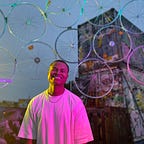The Power of Personas
In UXR there are many tools and techniques researchers use to help ideate the user. In doing so, researchers are better able to understand the motives that drive a user to love or despise a product. One tried and tested technique would be the utilization of user personas and user stories. User Personas are fictional characters that represent our varying users. These characters are based on extensive research on who, why, and how the product is being utilized. Subsequently, the researcher is better able to understand the pain point the user might have as well as areas that are doing exceptionally well. After the creation of user personas comes User Stories. User Stories are a set of goal-oriented stories about the Personas that were just created. These stories typically are around one to two sentences long and extremely specific. Both techniques will help ensure that the design process is productive, guided, and rewarding.
As stated, Personas are a great way to start ideating the user you are designing a product for. There are a few ways to go about this process, so understanding which to employ is crucial. Lene Nielsen, a specialist with a PH.D in Personas, states that there are four different perspectives designers use to add value and different perspectives to a project. These perspectives are “Goal-directed Personas”, “Engaging Personas”, “Role-Based Personas”, and “Fictional Personas.”
Goal-directed Personas are based almost entirely on the goal the user is trying to achieve. By asking yourself “why do my users use this product?” designers can gain a better understanding of the overall goal. In doing so, creating a product that creates little hassle for the users. The next perspective is Engaging Personas. This perspective goes directly with user stories. By creating stories, the designer can create a clear and realistic perspective of our fictional personas. As a result, researchers can better grasp the emotions and motives of the user.
Another perspective that is mentioned is Role-based Personas. Role-based Personas are like Goal-directed Personas, but these are driven more off data-backed research. This perspective focuses on the role the user plays in the larger picture. By asking yourself “where does my user use my product?” or “who or what is directly impacted by the utilization of the product?” the researcher gains insight into how the product affects society. This really helps the researcher understand the reasons a user might do one thing instead of another.
The final perspective, according to Nielsen, is Fictional Personas. This perspective does not involve any fictional characters but is created using the experiences of the design team and others involved in the creation process. This perspective is good when first starting out but should not be a deciding factor in the finished product.
To achieve the best personas possible, Nielsen states that there are ten steps in the process of creating beneficial user personas. The first step, of course, the researchers must collect data. Collecting as much information about your users will help to focus the assignment. Next, the researchers must form a hypothesis. This usually comes in the form of Empathy Maps or Affinity Diagrams. After that everyone working on the project must come to an agreement on the hypothesis and the number of personas that will be created. Once the team has come to an agreement, then everyone must create scenarios for the personas. The last and final step is to make alterations as the design process moves forward. In doing so, the team will constantly have fresh ideas and rid themselves of any outdated ones.
In conclusion, personas and user stories are powerful tools designers can employ in the first step of the design process. When it comes to personas, there are a few to choose from so understanding which perspectives work the best for which situations is vital. Some force the designer to take the user’s end goal into perspective, others rely on stories involving our fictitious personas, and some are created from the experiences of the team involved in the process. The leading expert on personas has a guide teams should follow when utilizing these methods. Thus, creating a more productive, focused, and effective design process.
